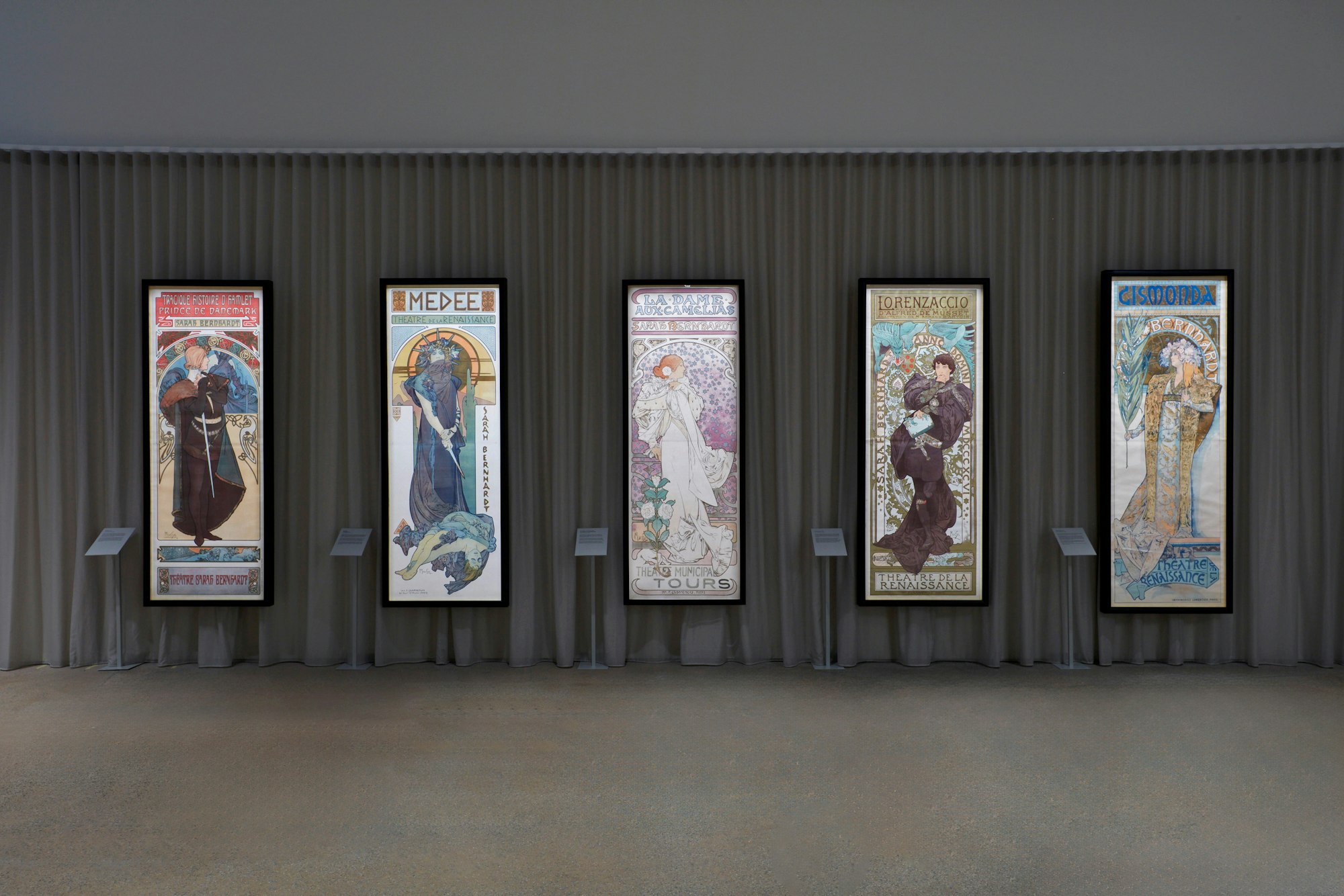
Installation view of the Alphonse Mucha: Spirit of Art Nouveau exhibition at the Art Gallery of New South Wales, photo © Art Gallery of New South Wales, Diana Panuccio
Alphonse Mucha 'Reverie' 1898, colour lithograph, 72.7 x 55.2 cm © Mucha Trust 2024.

Alphonse Mucha 'Reverie' 1898, colour lithograph, 72.7 x 55.2 cm © Mucha Trust 2024 // Alphonse Mucha 'The Seasons: Summer' 1896, colour lithograph, 103 x 54 cm © Mucha Trust 2024. // Alphonse Mucha 'Princess Hyacinth' 1911, colour lithograph 125.5 x 83.5 cm © Mucha Trust 2024
The Art Gallery of New South Wales presents Alphonse Mucha: Spirit of Art Nouveau. This exhibition traces the remarkable life and work of one of the great pioneers of the 19th-century art world, Czech art nouveau master Alphonse Mucha, and will be the largest exhibition ever seen in Australia of this visionary artist’s work.
In seductive, sinuous compositions, Alphonse Mucha (1860–1939) developed a new stylistic language that defined the look of late 19th-century Paris to be the very spirit of art nouveau, creating some of the most instantly recognisable and best-loved works in modern European art.
This exhibition, exclusive to the Art Gallery, is realised in close cooperation with the Mucha Foundation, Prague, and is drawn from the Mucha Family Collection. The exhibition features more than 200 works including paintings, illustrations, posters, jewellery, photographs, sculpture and more. It is co-curated by Tomoko Sato, curator of the Mucha Foundation, and Jackie Dunn, senior curator of exhibitions at the Art Gallery.
Declared during his lifetime as ‘the greatest decorative artist in the world’, Mucha rocketed to fame with the posters he created for legendary actor and international superstar Sarah Bernhardt, before going on to receive global recognition through his advertising and product design – and the ‘decorative panels’ that were his first steps towards the democratisation of art that he so desired.
This exhibition will explore his full oeuvre from the early years before he moved to Paris in 1887, to his famed poster art and the development of the ‘Mucha style’. His late great painting cycle the Slav Epic (1912–26), comprising 20 grand canvases, is brought to life in Sydney as an immersive digital experience.
Art Gallery director Michael Brand said: ‘Alphonse Mucha was one of art’s great stylistic innovators and whilst best known for his iconic posters and decorative designs that contributed to the development of art nouveau, we hope this truly comprehensive exhibition will offer audiences the chance to take a deeper look at the remarkable life of this fascinating artist and his humanistic ideals.’
‘We are grateful to the Mucha Foundation for their generosity in lending these treasures to allow audiences here in Sydney the chance to discover an exhibition not only rich in art but also in history, human achievement and political commitment,’ said Brand.
Minister for the Arts, Music and the Night-time Economy, and Minister for Jobs and Tourism John Graham said: ‘Lovers of art nouveau will be treated to a spectacular exhibition of the life and work of this visionary artist. Between this and the annually anticipated Archibald Prize exhibition, visitors to the Art Gallery of New South Wales are in for a visual feast this winter.’
Alongside Mucha’s own work, the exhibition will also feature a selection of Japanese prints from the Art Gallery’s exceptional ukiyo-e collection, the likes of which circulated during Mucha’s time in Paris in the late 19th century and profoundly influenced the art nouveau style. Also on display will be an exciting selection of 1960s and 1970s band posters and LP record covers, as well as more recent Japanese manga, that followed the countercultural rediscovery of Mucha’s art, showcasing his recent and ongoing influence on modern culture.
The exhibition is accompanied by a richly illustrated catalogue, written by Tomoko Sato, a leading Mucha expert and curator at the Mucha Foundation. The publication features over 200 stunning images depicting Mucha’s art and life, including rarely seen archival photographs.
